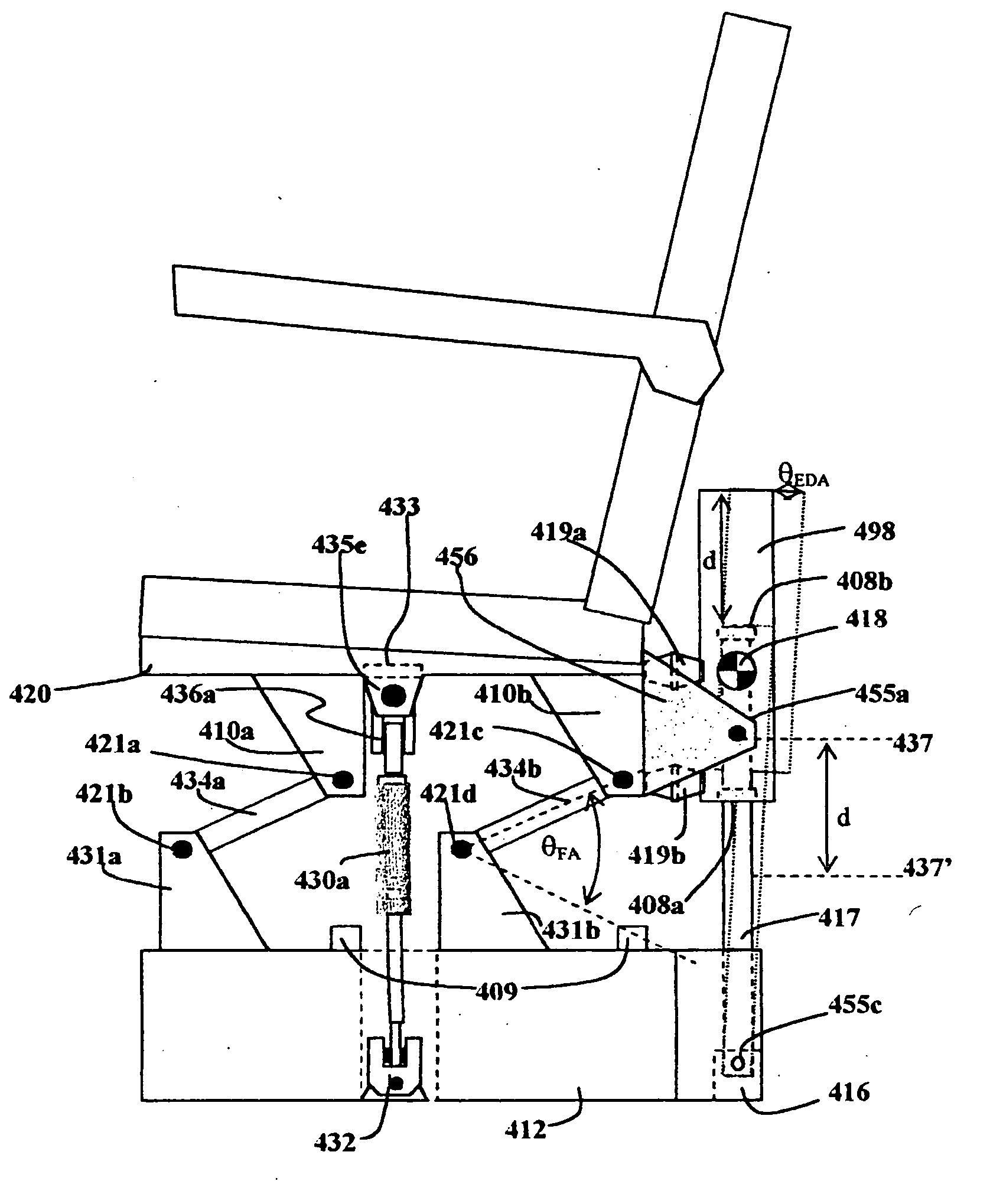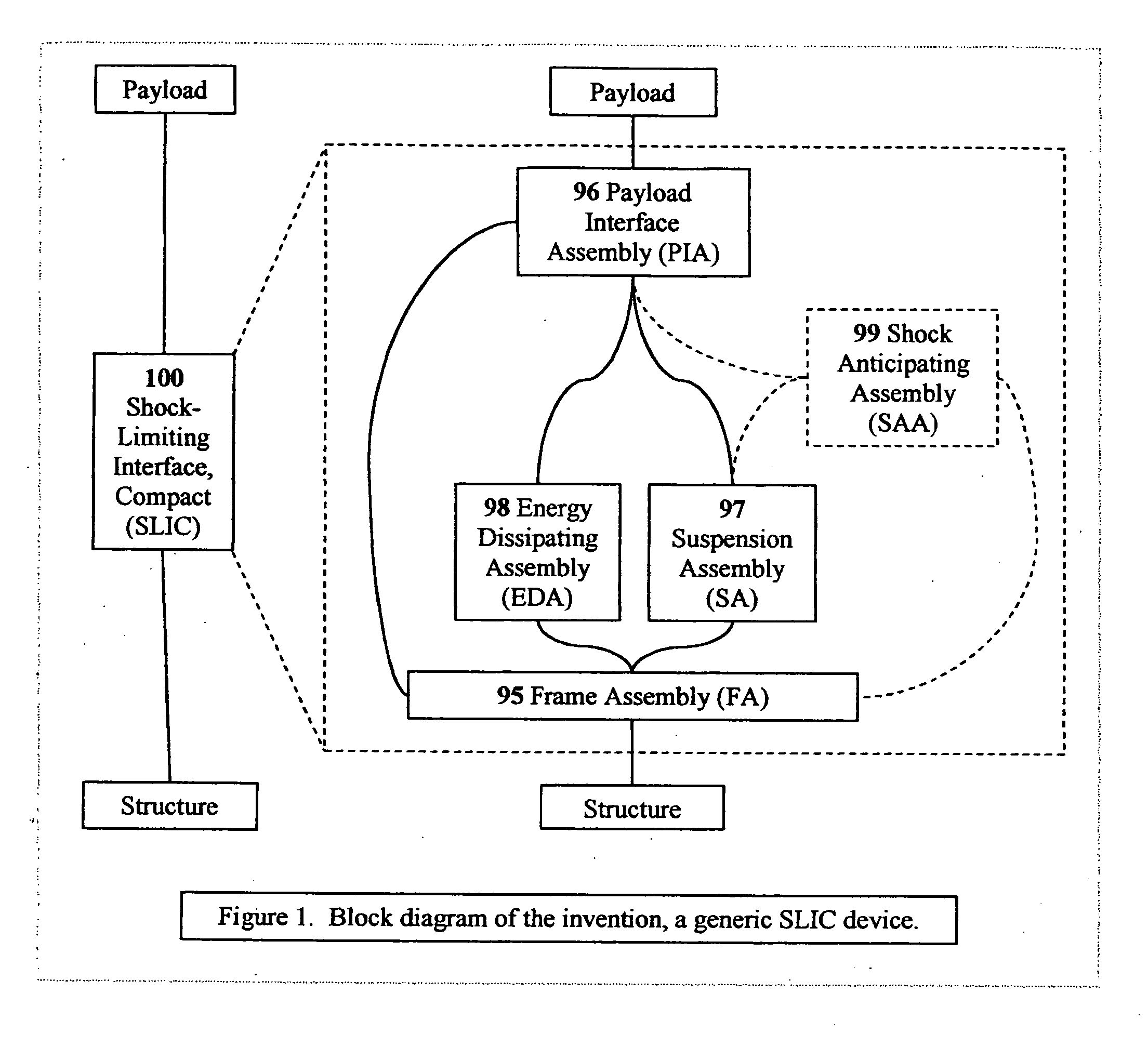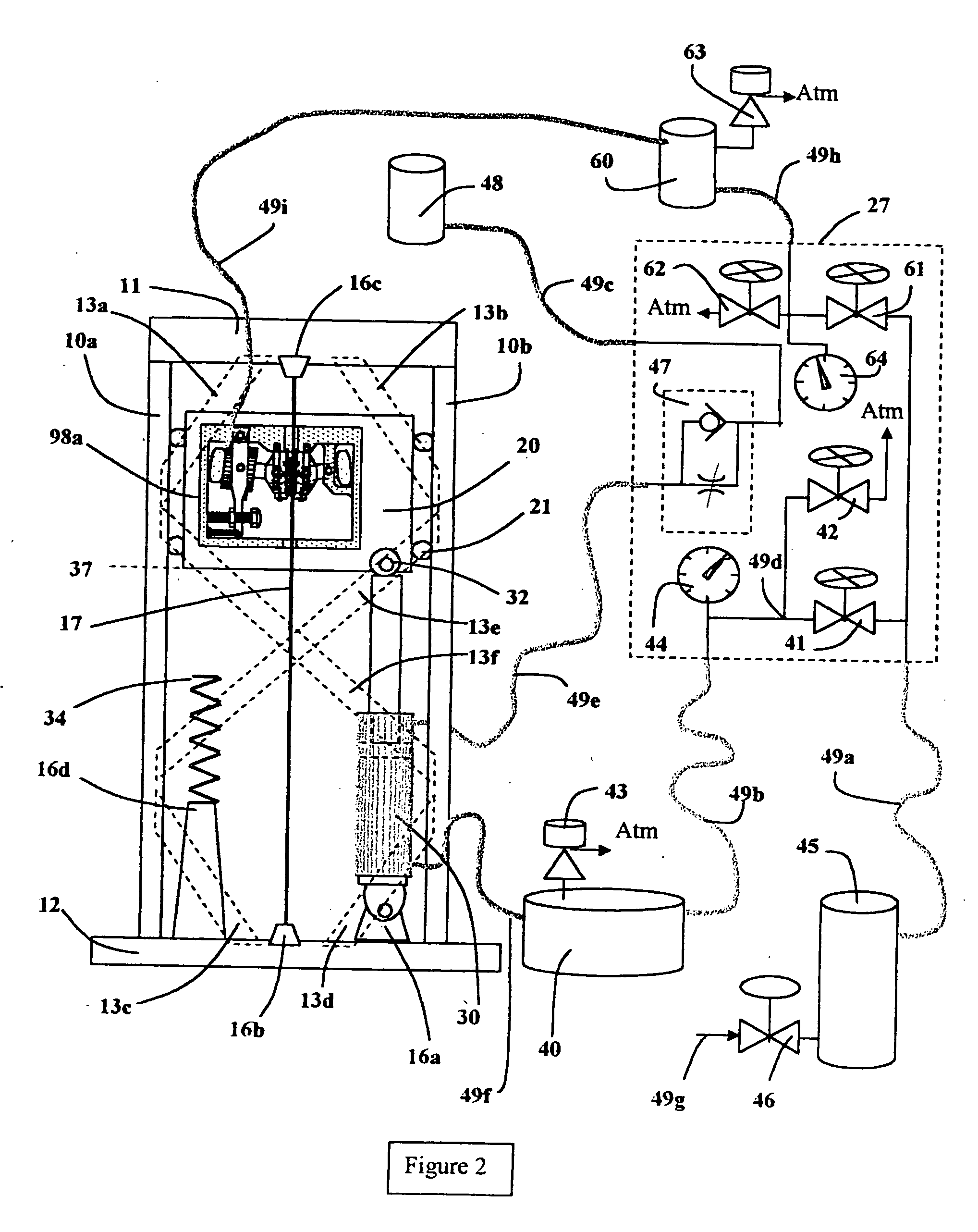Shock-limiting interface, compact (SLIC)
a compact, shock-limiting technology, applied in the direction of machine supports, transportation and packaging, other domestic objects, etc., can solve the problems of significant vertical shocks of planing boats operating in rough water, serious injuries, roll stability problems,
- Summary
- Abstract
- Description
- Claims
- Application Information
AI Technical Summary
Benefits of technology
Problems solved by technology
Method used
Image
Examples
embodiment
Concepts of Embodiment
[0060] A number of useful shock-limiting applications are conceived. The invention has applications for protecting a Payload housed in a structure as well as a Payload riding in a vehicle. Various seating systems, equipment foundations, cockpits, standing, platforms, even entire chambers can be isolated from their host vehicle or their other surroundings. The invention can also be implemented on the exterior of a vehicle, as a shock-limiting bumper to reduce the impact force of a head-on collision. The invention could be installed on the exterior of a fixed structure, such a bridge abutment, to limit the force on the structure which may result from accidental vehicle impact. An amusement park thrill ride offering a vertical free-fail of several hundred feet and “a sudden” thrill stop at the end could be implemented. Another application is as a bumper system on the front end of a vehicle
[0061]FIG. 1 shows a block diagram of a SLIC device 100 mounted functionall...
PUM
 Login to View More
Login to View More Abstract
Description
Claims
Application Information
 Login to View More
Login to View More - R&D
- Intellectual Property
- Life Sciences
- Materials
- Tech Scout
- Unparalleled Data Quality
- Higher Quality Content
- 60% Fewer Hallucinations
Browse by: Latest US Patents, China's latest patents, Technical Efficacy Thesaurus, Application Domain, Technology Topic, Popular Technical Reports.
© 2025 PatSnap. All rights reserved.Legal|Privacy policy|Modern Slavery Act Transparency Statement|Sitemap|About US| Contact US: help@patsnap.com



